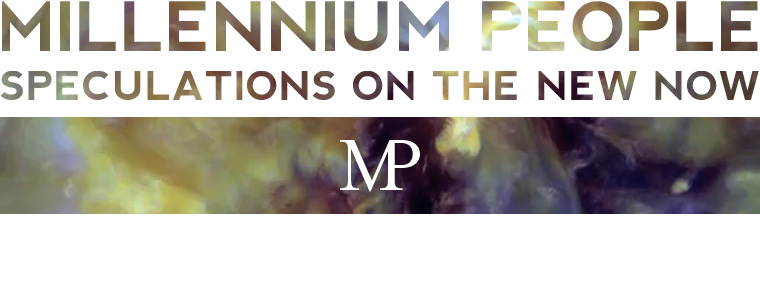
Drawing made using Terragen2, here.
Landscape rendering software is becoming increasingly powerful – several images in the Terragen gallery (like the one above) had me really pushing my face up against the screen trying to work out if they were photos or not (what a n00b). While I find renders of huts in the forest all very nice, the real question is: what is this good for? Is it art? Maybe. I don't know.
Separately, I was cruising through pictures from space and came across an article about how Venus used to be like Earth, with moderate temperatures and, very probably, open bodies of water. Then the greenhouse effect went mad, and turned the atmosphere into a carbon dioxide soup bowl, with sulphuric acid for rain. Venus can be thought of as either Earth's failed older sister, or possibly Earth's foreboding doppelganger. If it hadn't gone so pear-shaped, maybe we'd be digging ancient alien churches out of the Venusian volcanic rubble.

Venus, Earth's failed sister, via jpl.
This all set me thinking about an amazing trilogy I read when I was a kid, 'Red Mars, Green Mars, Blue Mars' by Kim Stanley Robinson (here's a good interview with the man over at Bldg Blog). He invented the concept of 'terraforming' – the human transformation of an entire planet's climate. He chose a rather predictable, and none too easy, subject: Mars. Low-oxygen modified plants, space reflectors to increase the amount of sunlight, nuclear melting of the permafrost and poles, all ultimately lead to a breathable atmosphere, vegetation, purple seas and complex weather patterns.
But why is it we are all so obsessed with getting further away from the sun? Terraforming Mars means starting from scratch, while Venus doesn't seem so different from our own planet –the act would give us two habitable planets in the solar system, quite close to each other. So why aren't we going there?
Left: Artist's conception of the surface of Venus (1968) via cosmographica; Right: A possible rendered vision for a terraformed Venus, via Fractal Landscapes.
What would a Venusian architecture be like? How do you respond to the history of a planet that has never supported life? I can only imagine flimsy constructions posed delicately on the highly volcanic surface, analogous to the early mining works of Australia (although the Europeans may have felt they were on Venus, they were in fact far from alone on that continent). But it may be very different – a massive and colourful vernacular that references the harsh sun and stunning landscapes (sounds more like Australia every minute).
We are only four months away from creating an artificial species, reports the Times. We are finally becoming God (it seems like we've been just playing around for ages) and actually inventing lifeforms. Now, couple that with Venus. Imagine a team of designers creating specific species to slowly turn the planet into a New Earth. Flora and fauna that once made will evolve and come to form a new planetary ecosystem quite unknown to us, and unique in the universe. Further, imagine bathing in an alien ocean or walking through a sulphur sink forest and knowing that every species is the work of Humanity.
Ego trip.



Probably the main reason is that Venus is such an unforgivably environment. Nothing can really survive on the surface for anything but a very short period of time. Mars is much easier to deal with as engineering on the surface is possible and it has a much lower gravity.
ReplyDeleteKim Stanley Robinson is a brilliant writer, and it helps that his missus is a scientist, as she keeps his ideas realistic. Have you read his latest? 50 degrees below... It's set in DC when global warming has melted Greenland, thus stopping the Gulf Stream. New England now resembles farthest northern siberia. Great stuff. The protagonist ends up living in a tree on a platform without walls. Not the most obvious architectural solution in the face of it, but it is a delicious ode to the 're-wilding' of the city in the face of catastrophic environmental disruption.
ReplyDeleteI've not read it- a trilogy again no? 40, 50, 60 something. sounds great, thanks for all the comments.
ReplyDelete